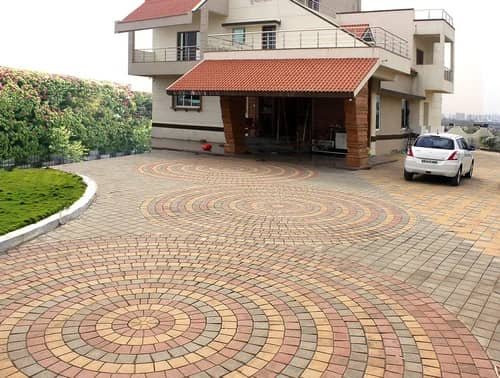Table of Contents
Introduction
Welcome to our comprehensive guide on block paving, where we unravel the intricacies of this versatile and aesthetically pleasing method of enhancing outdoor spaces. This detailed exploration aims to equip you with the knowledge needed to make informed decisions about your landscaping projects.

Understanding Block Paving
What is Block Paving?
Block paving involves the use of individual units or blocks to create a visually appealing and durable surface. These blocks are usually made from materials like concrete, clay, or natural stone, providing a wide array of options for customization.
Benefits of Block Paving
When considering landscaping options, it’s crucial to understand the benefits that block paving brings to the table:
1. Durability and Longevity
Block paving is renowned for its durability, ensuring a long-lasting solution for your driveways, walkways, or patios. The individual blocks distribute weight evenly, reducing the risk of cracks and damage.
2. Versatility in Design
With an extensive range of colors, shapes, and patterns available, paving offers unparalleled design flexibility. This allows you to create unique and personalized outdoor spaces that reflect your style.
3. Ease of Maintenance
Maintaining block paving is a breeze. Individual blocks can be easily replaced if damaged, and regular cleaning keeps the surface looking pristine for years.
The Installation Process
1. Site Preparation
Before embarking on the installation journey, a meticulous site preparation process is crucial. This includes excavation, ensuring a stable foundation for the blocks.
2. Base Installation
Creating a solid base is fundamental to the longevity of paving. Typically, a layer of compacted sand or crushed stone serves as a stable foundation.
3. Block Arrangement
The arrangement of blocks is where creativity comes into play. Whether you opt for a classic herringbone pattern or a contemporary design, precision in laying the blocks is key.
4. Jointing and Finishing
To ensure stability and prevent shifting, jointing sand is swept into the spaces between the blocks. This final step provides a seamless finish, enhancing both the appearance and structural integrity.
Maintenance Tips for Longevity
Ensuring the longevity of your block paving requires regular maintenance. Here are some tips to keep your outdoor space looking impeccable:
1. Regular Cleaning
Routine cleaning with a power washer removes dirt, moss, and algae, preventing the growth of unsightly substances.
2. Weed Prevention
Applying a weed inhibitor or sealant helps in preventing the growth of weeds between the blocks, maintaining the pristine look of your paved surface.
3. Prompt Repairs
Address any damaged or sunken blocks promptly to prevent further issues. Swift repairs contribute to the overall longevity of your block paving.
Choosing the Right Paving Material
Selecting the right material for your block paving project is a critical decision. Each material has its unique characteristics, influencing both aesthetics and durability. Here are some popular options:
1. Concrete Blocks
Known for their affordability and versatility, concrete blocks come in various colors and shapes. They provide a clean and modern look, suitable for various design styles.
2. Clay Pavers
For a more traditional and timeless appearance, clay pavers offer a classic aesthetic. They are durable, resistant to fading, and add a touch of elegance to your outdoor space.
3. Natural Stone Paving
If you desire a luxurious and natural look, natural stone paving is an excellent choice. Options like granite, limestone, or sandstone bring a unique texture and character to your paved areas.
Conclusion
In conclusion, block paving stands as a versatile and durable solution for enhancing outdoor spaces. From the initial site preparation to the finishing touches, understanding the basics of block paving is essential for a successful landscaping project.



